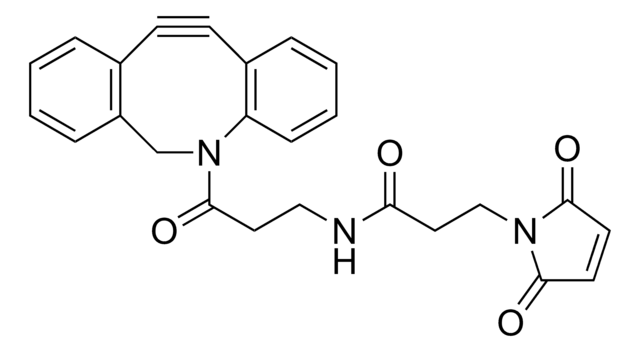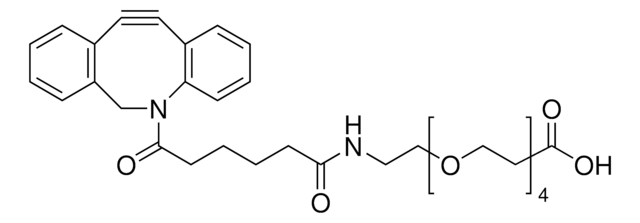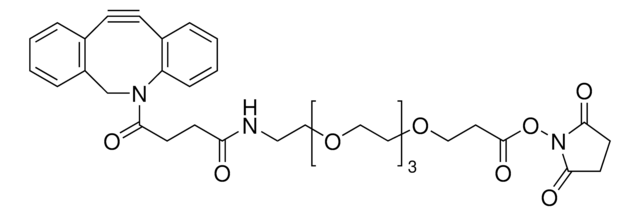Wichtige Dokumente
760706
Sulfo-dibenzocyclooctyne-biotin conjugate
for Copper-free Click Chemistry
Synonym(e):
Sulfo-DBCO-biotin
About This Item
Empfohlene Produkte
Qualitätsniveau
Form
solid
Eignung der Reaktion
reaction type: click chemistry
reagent type: cross-linking reagent
Lagertemp.
−20°C
SMILES String
CC[NH+](CC)CC.[O-]S(=O)(=O)C(CNC(=O)CCCC[C@@H]1SC[C@@H]2NC(=O)N[C@H]12)C(=O)NCCC(=O)N3Cc4ccccc4C#Cc5ccccc35
InChI
1S/C31H35N5O7S2.C6H15N/c37-27(12-6-5-11-25-29-23(19-44-25)34-31(40)35-29)33-17-26(45(41,42)43)30(39)32-16-15-28(38)36-18-22-9-2-1-7-20(22)13-14-21-8-3-4-10-24(21)36;1-4-7(5-2)6-3/h1-4,7-10,23,25-26,29H,5-6,11-12,15-19H2,(H,32,39)(H,33,37)(H2,34,35,40)(H,41,42,43);4-6H2,1-3H3/t23-,25-,26?,29-;/m0./s1
InChIKey
RACLEVCKGUBCTH-GESOYTMLSA-N
Verwandte Kategorien
Allgemeine Beschreibung
Anwendung
Leistungsmerkmale und Vorteile
Signalwort
Warning
H-Sätze
Gefahreneinstufungen
Eye Irrit. 2 - Skin Irrit. 2 - STOT SE 3
Zielorgane
Respiratory system
Lagerklassenschlüssel
11 - Combustible Solids
WGK
WGK 3
Flammpunkt (°F)
Not applicable
Flammpunkt (°C)
Not applicable
Hier finden Sie alle aktuellen Versionen:
Besitzen Sie dieses Produkt bereits?
In der Dokumentenbibliothek finden Sie die Dokumentation zu den Produkten, die Sie kürzlich erworben haben.
Kunden haben sich ebenfalls angesehen
Artikel
Copper-free click chemistry is an alternative approach to click chemistry that proceeds at a lower activation barrier and is free of cytotoxic transition metal catalysts.
Global Trade Item Number
| SKU | GTIN |
|---|---|
| 760706-5MG | 4061833230497 |
Unser Team von Wissenschaftlern verfügt über Erfahrung in allen Forschungsbereichen einschließlich Life Science, Materialwissenschaften, chemischer Synthese, Chromatographie, Analytik und vielen mehr..
Setzen Sie sich mit dem technischen Dienst in Verbindung.
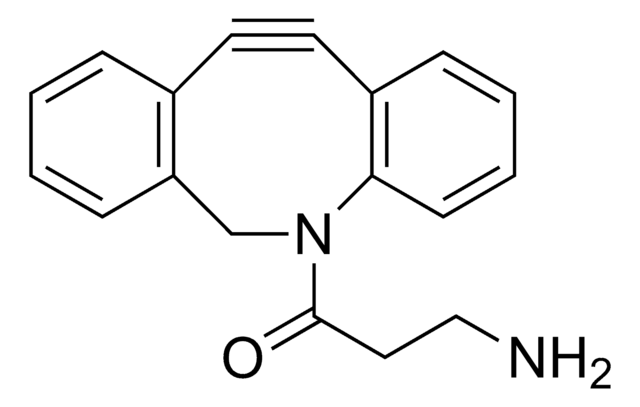
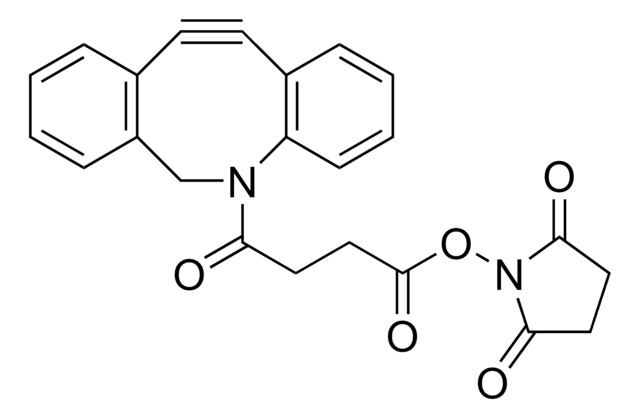



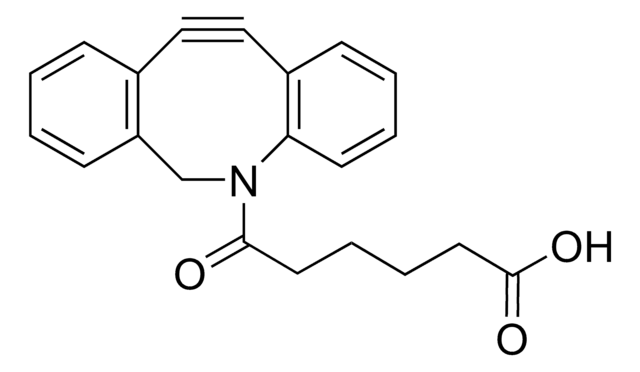
![N-[(1R,8S,9s)-Bicyclo[6.1.0]non-4-in-9-ylmethyloxycarbonyl]-1,8-diamino-3,6-dioxaoctan for Copper-free Click Chemistry](/deepweb/assets/sigmaaldrich/product/structures/294/853/c5e47d84-5aee-4797-aa24-604f291171cc/640/c5e47d84-5aee-4797-aa24-604f291171cc.png)





